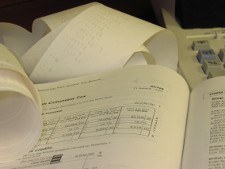
Source: sxc.hu Photo: dishaw
I’m an itemizer. By the time everything is added up on Schedule A of my Form 1040, my items usually exceed the standard deduction. So I itemize. But the decision to itemize your 2009 taxes may be a little more difficult this tax time, due to the fact that there have been some interesting changes to tax law for 2010.
Higher standard deduction
The standard deduction has been increased to $11,400 for married couples filing jointly. The number for head of household is $8,350, and $5,700 for those who are single or married filing singly. This relatively high standard deduction means that when you add everything up, you still might be short of the standard. If that is the case, then the decision is fairly easy: Take the standard deduction.
But the decision to itemize becomes a little muddled when you start to think of the extras that are being provided for those who take the standard deduction. Here are some of the extras that those taking the standard deduction can tack on:
- Over 65: If you at least 65, you can tack on an extra amount to that standard deduction. For singles, the amount is $1,400. For those married filing jointly, the number is $1,100. And if your spouse is over the age of 65 as well, that’s another $1,100. So, two married people filing jointly over the age of 65 actually get a standard deduction of $13,600.
- Blind: Those who are legally blind also get to add to their standard deduction. For singles, it’s $1,400, and for those who are married, it’s $1,100. If you are blind and over 65, you can add both those deductions to your already increased standard deduction. You can see how, for some people who normally itemize, this is not the year to do so.
- Property tax: Normally, in order to deduct the property tax you pay, you have to itemize. This year, though, those who are single can add a deduction of up to $500 to the standard, while those who are married filing jointly can add up to $1,000. This means that you will have to do a little math. If you itemize, you can usually deduct the entire amount of the property taxes you pay. So you need to decide whether it is more advantageous to take the higher standard deduction and add some of your property taxes to it. For example, if you add up your items on Schedule A (including full property tax), and you get $12,000, if you are married filing jointly, you are probably better off taking the standard deduction of $11,400 and then adding the $1,000 to it for $12,400, even though you might not be deducting the entire amount of your property taxes.
As you can see, it is a bit more of a numbers game this year, with the standard deduction providing a bit of an advantage for some taxpayers. It is also worth noting that other considerations might come into play as you look at whether this is a good tax year to itemize. The vehicle sales tax deduction on new cars and light trucks bought after February 17 and before December 31 of this year also provides a consideration. And, don’t forget that you can itemize state and local income taxes, as well as charitable donations.
It might be a good idea to look at Schedule A and see what’s on there, and perhaps consult with a tax professional who can help you determine the best course of action for this tax year. If you normally itemize, take a hard look at the 2010 rules for the standard deduction, and consider your tax strategies, to see whether it is in your best interest to continue doing so.
You can also visit the IRS web site for more information.
Miranda is freelance journalist. She specializes in topics related to money, especially personal finance, small business, and investing. You can read more of my writing at Planting Money Seeds.
